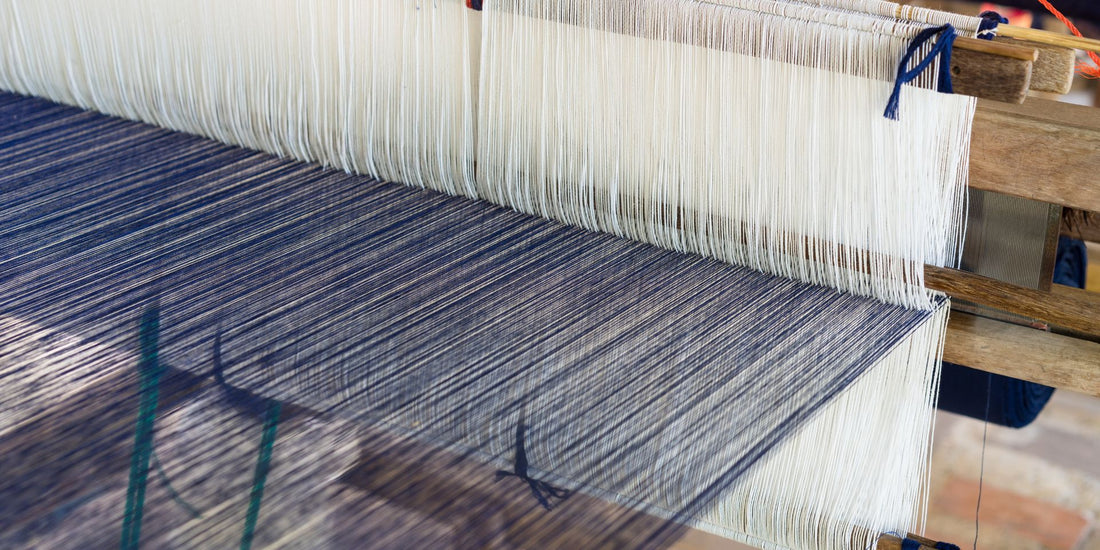Fresh from the loom
"Loomstate" is one of the many terms you come across when you first enter the world of wraps. It simply means that the wrap is brand new and unused - it comes straight from the loom. A wrap in loomstate needs to be washed before it's used.
Why does loomstate matter?
A wrap in loomstate won't feel "right". When a woven wrap is being created, the many threads on the loom are separated and tightly stretched to ensure precise weaving without any tangles. This can result in threads that would normally be airy and soft feeling stiff and rigid. Additionally, fabric in loomstate might feel more loosely woven than it's actually designed to be.
Security
A wrap in loomstate is delicate. A myth suggests that a woven wrap in loomstate is so fragile that it can be torn by hand. Fortunately, that's not true. The fabric is still very strong. However, it's true that the fabric is more loosely woven, and the threads are compact and separate. This can make the threads more prone to sliding apart and causing what's known as "thread shifting." While thread shifting is not dangerous on its own, it can develop into holes, which can lead to the fabric tearing.
Likewise, a wrap or ring sling in loomstate is also more prone to pulled threads - individual threads that are pulled out of the weaving. Pulled threads are also not dangerous on their own and can easily be pulled back into place, but threads that stick out are at a higher risk of breaking.
Because a wrap or sling in loomstate is delicate, it should never be used for carrying until it has been washed for the first time.
Carrying properties
In addition to safety, another important reason to wash your wrap or sling in loomstate is that the fabric's "personality" and carrying properties don't fully emerge until after the first wash. It's impossible to accurately judge how it feels to carry in a wrap by trying it on in its loomstate.
Wool fibers, which are tense and stiff in loomstate, will contract and regain their elastic bounce with a wash, becoming soft and fluffy.
Many types of silk contain residues from the silk caterpillar, pupa debris, and sometimes even small twigs. This can make the silk stiff and prickly. These impurities are typically washed out in the first wash.
Linen and hemp, which are often very rigid in loomstate, noticeably soften after the first machine wash, as they get a bit of a "beating."
Cotton threads are often tightly spun and will "open up" after the first wash, gripping neighboring threads better.
A wrap is typically both wider and longer in loomstate. The GSM (grams per square meter) will therefore also be lower in a woven wrap in loomstate and cannot be accurately measured until the wrap is washed. Nordic Slings provides the approximate GSM of their ring slings and woven wraps after washing.
Impurities
Last but not least, there's excess dye and a lot of dust (microscopic fabric fibers - weaving generates a lot of dust) from the production in most wraps. The first wash will also help wash this out.
How should I wash?
You should wash your wrap based on the materials it contains - always wash according to the most delicate fiber, regardless of how small a portion of the wrap it makes up. For example, there's no difference in caring for a wrap with 10% wool versus 100% wool. You can read about how to wash your carrier here: Washing your carrier










